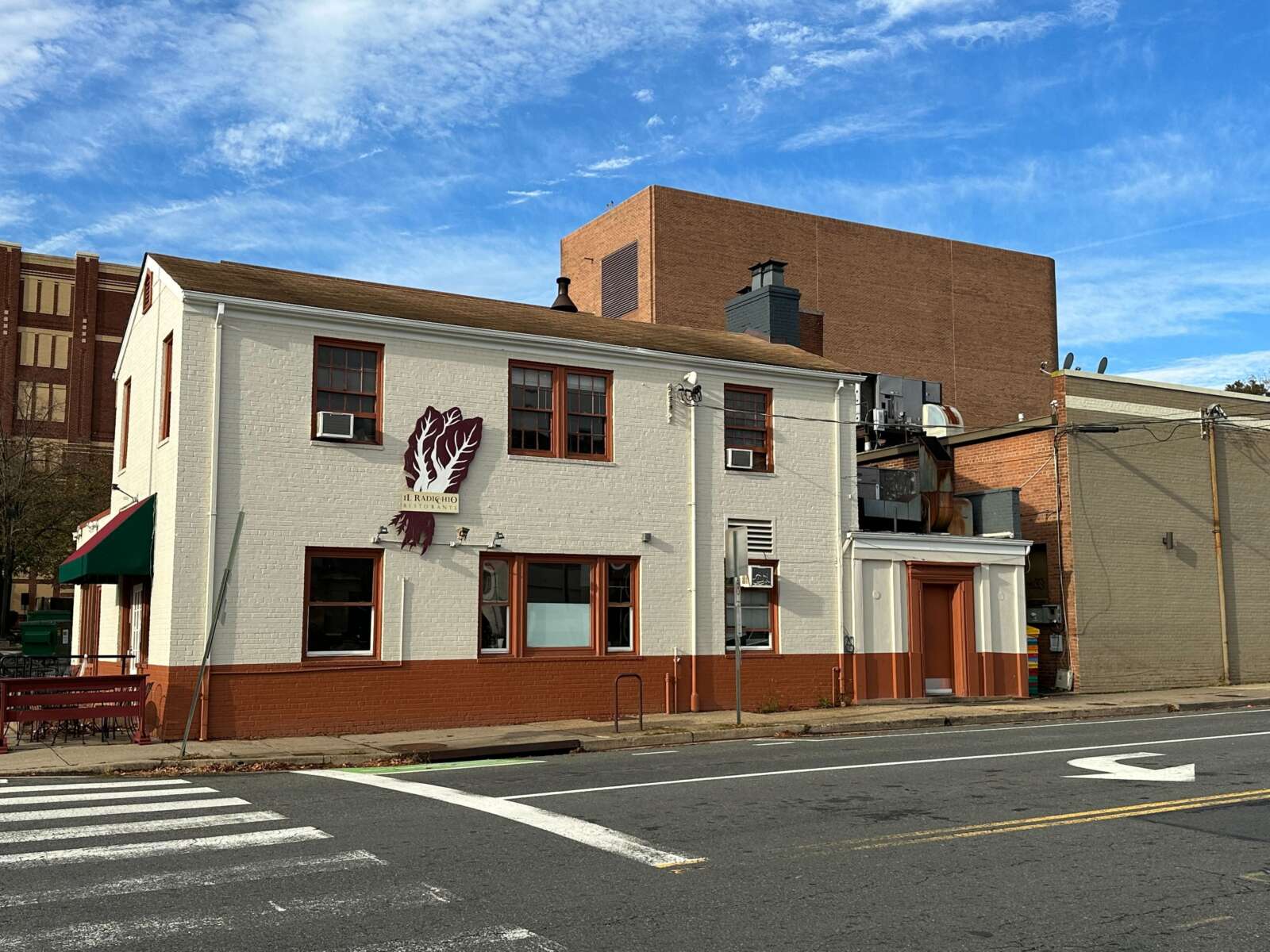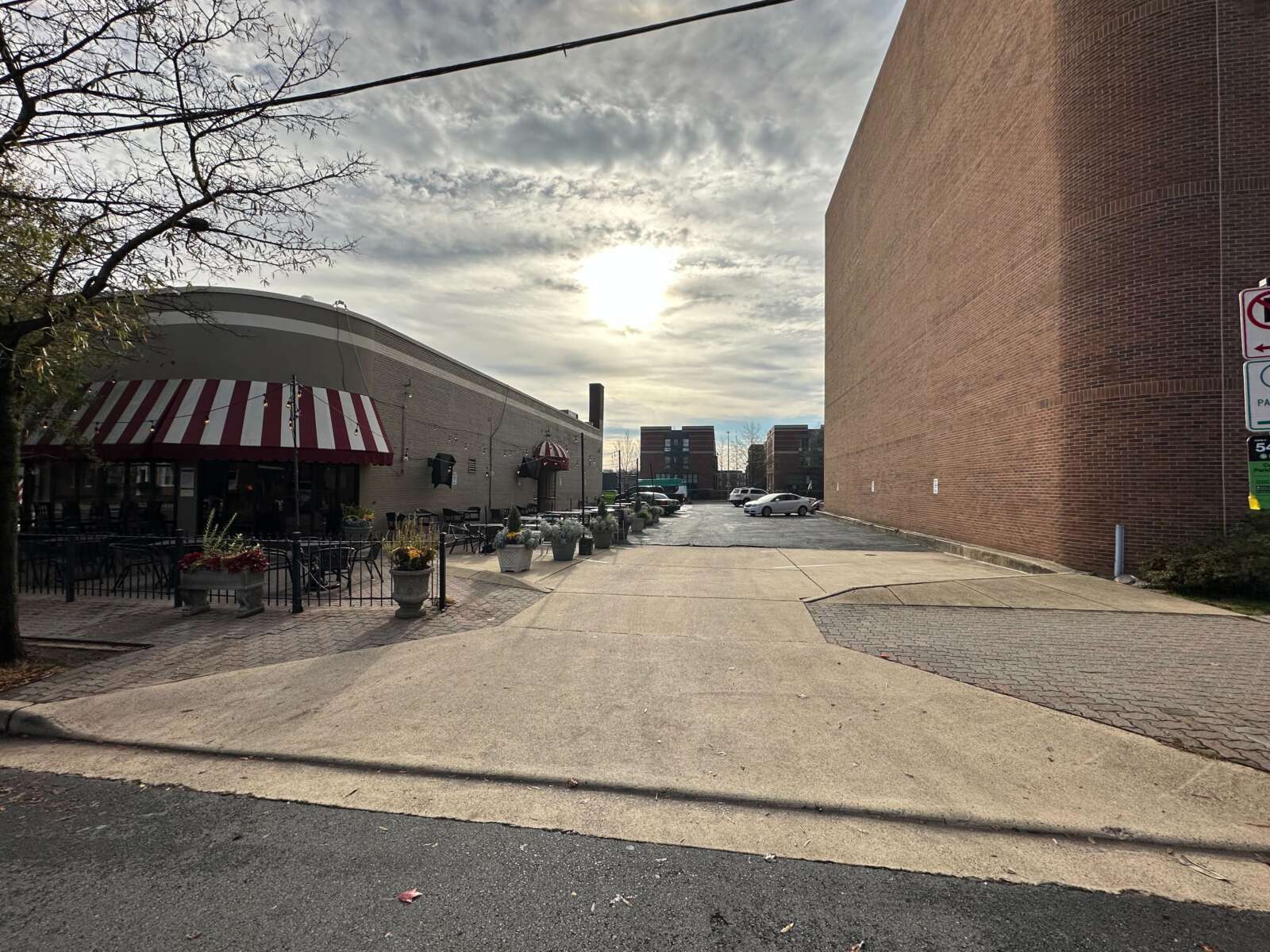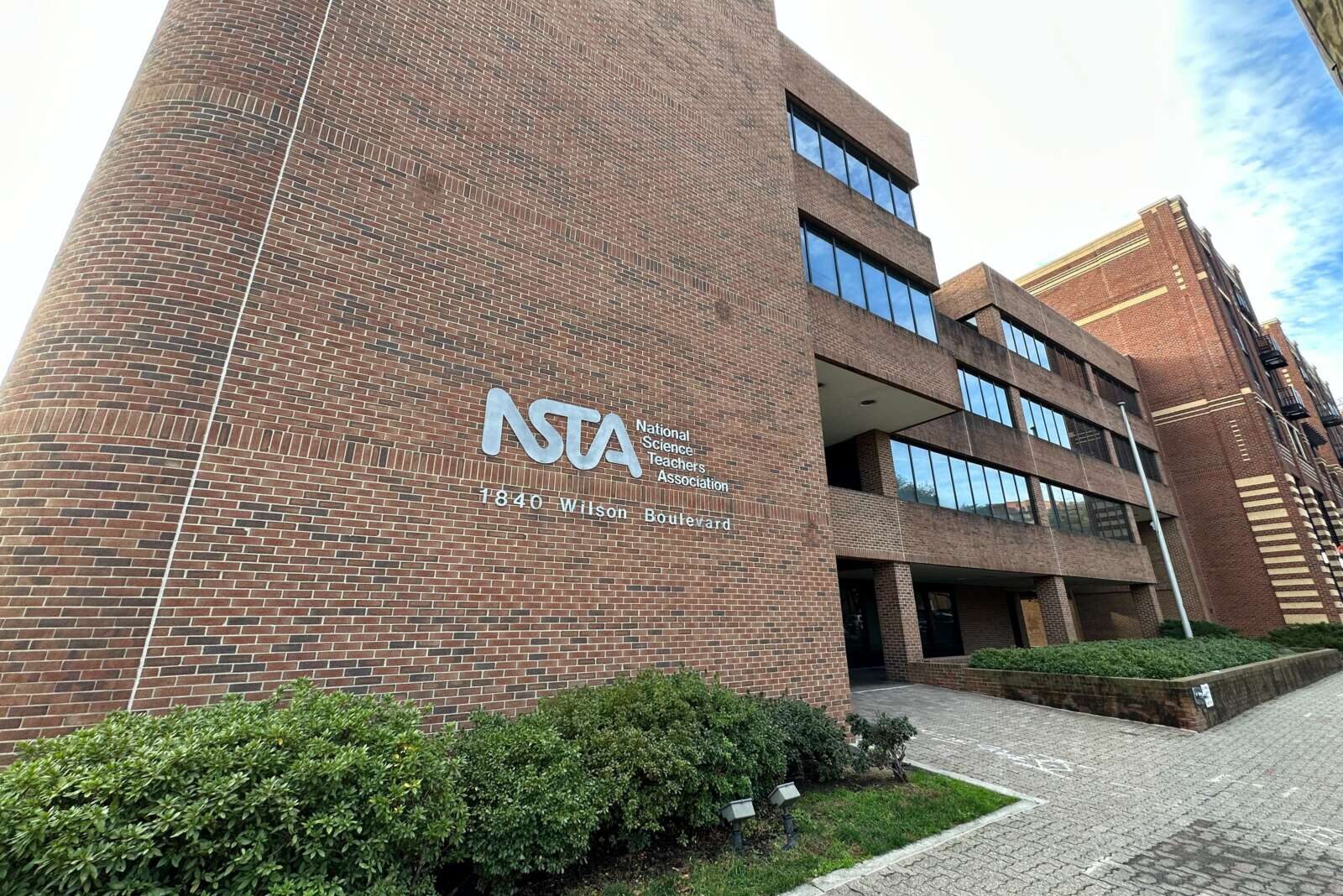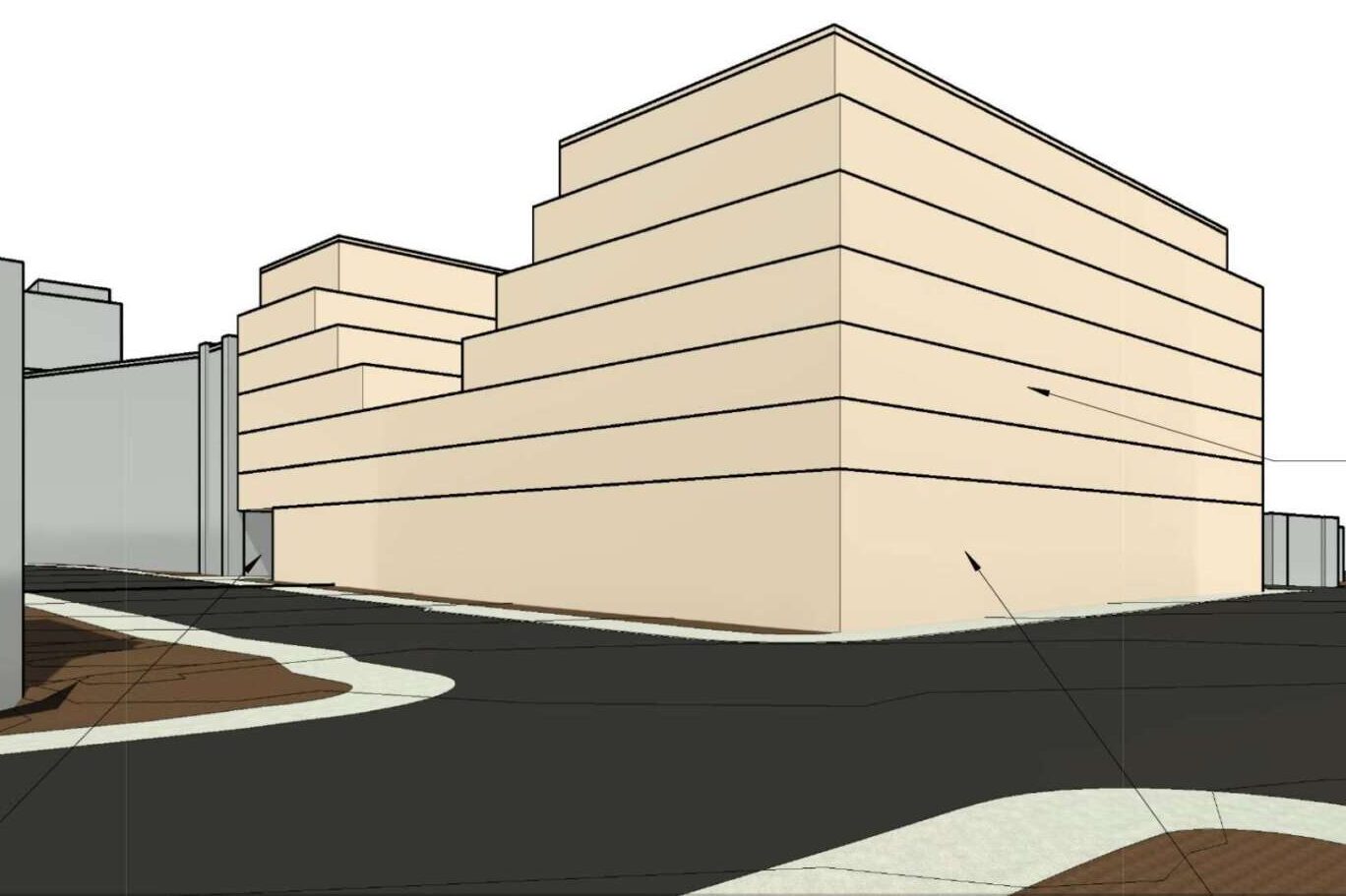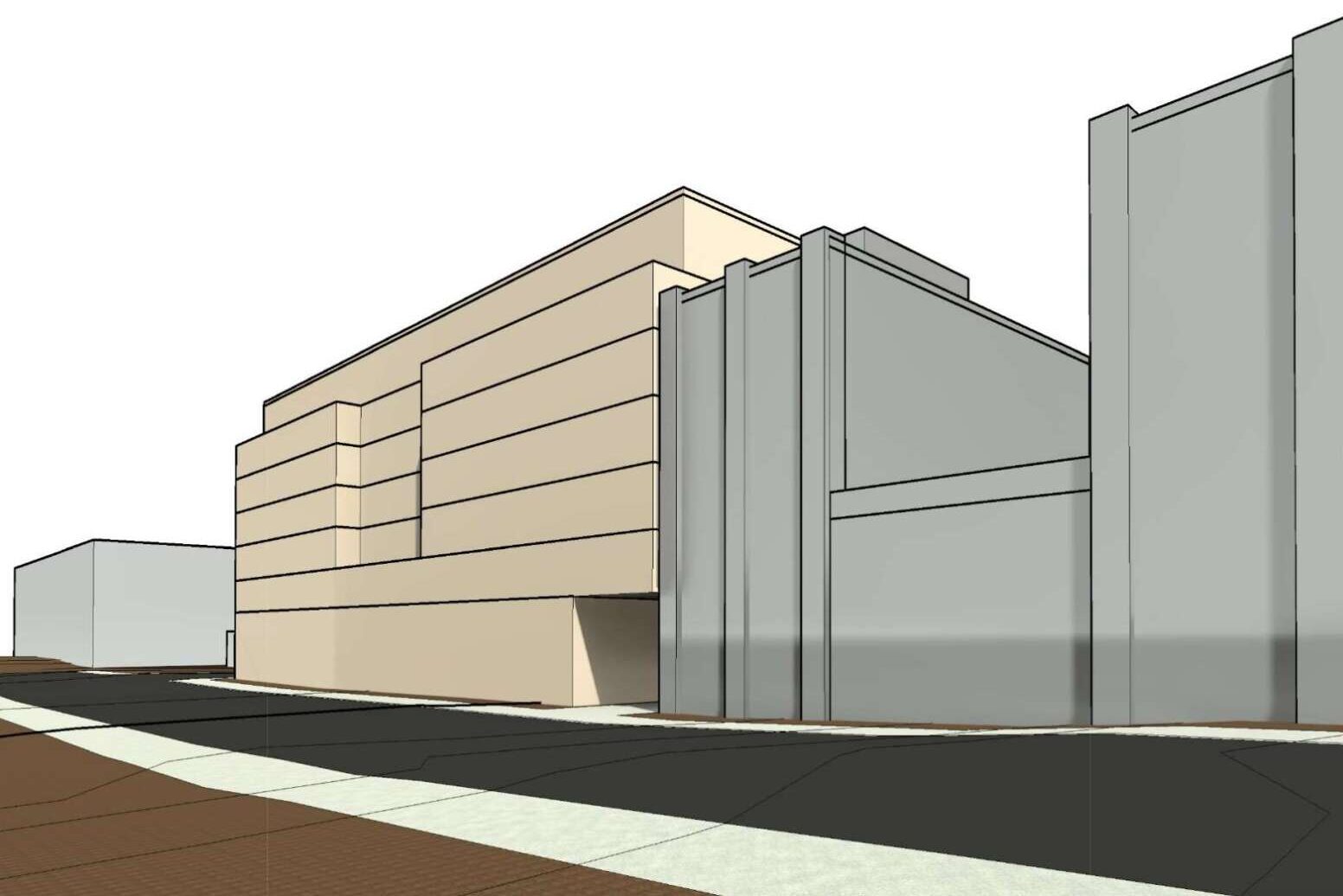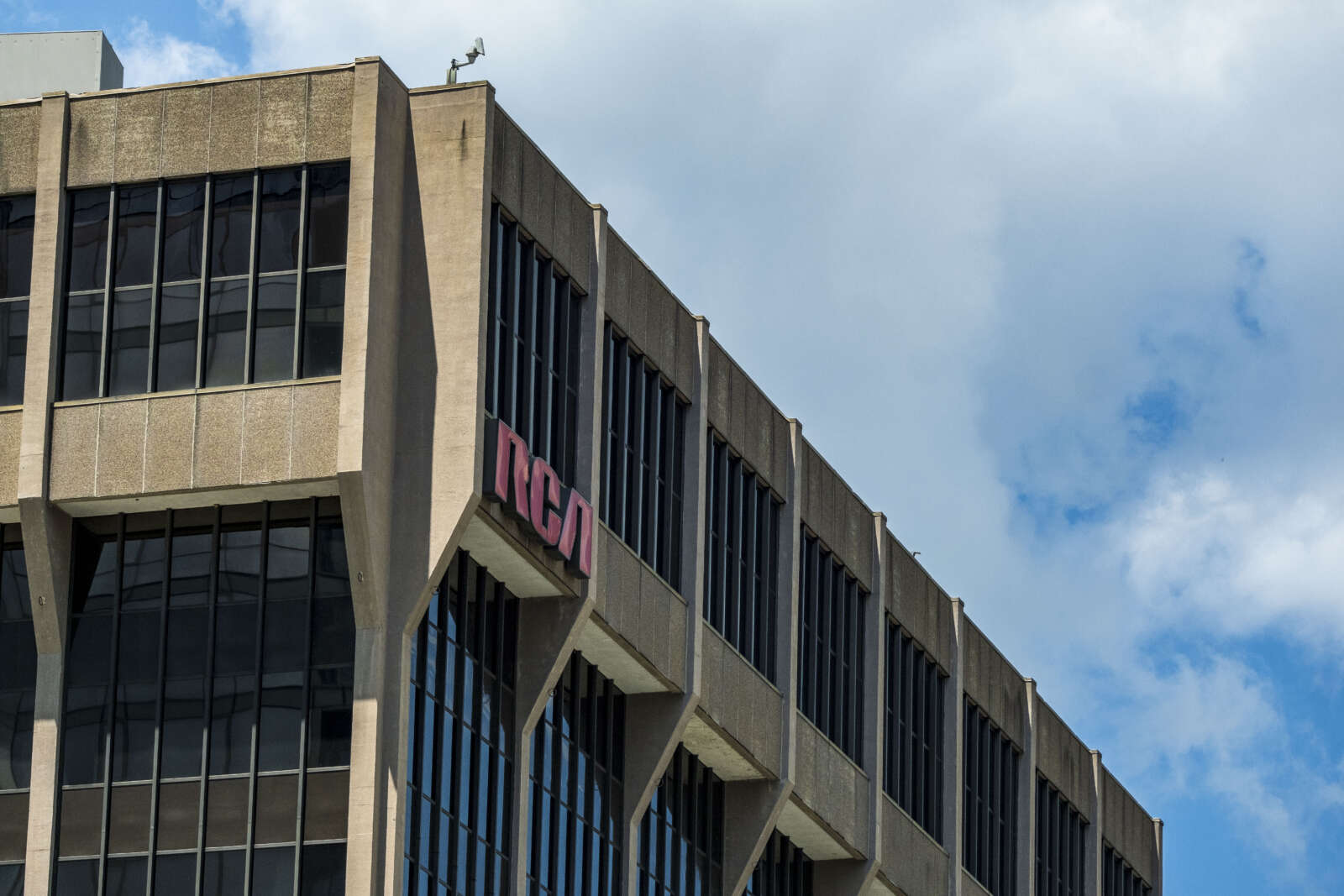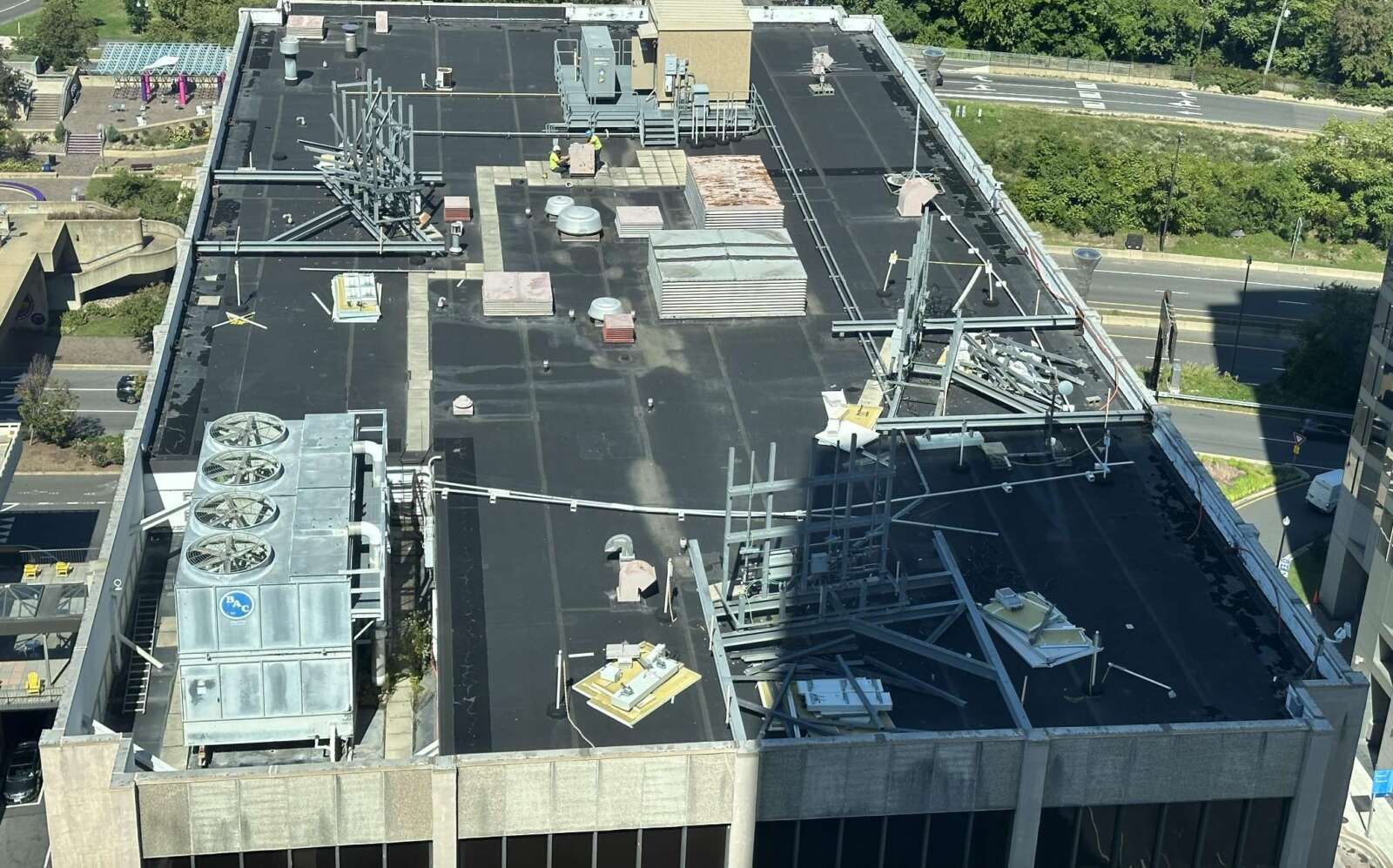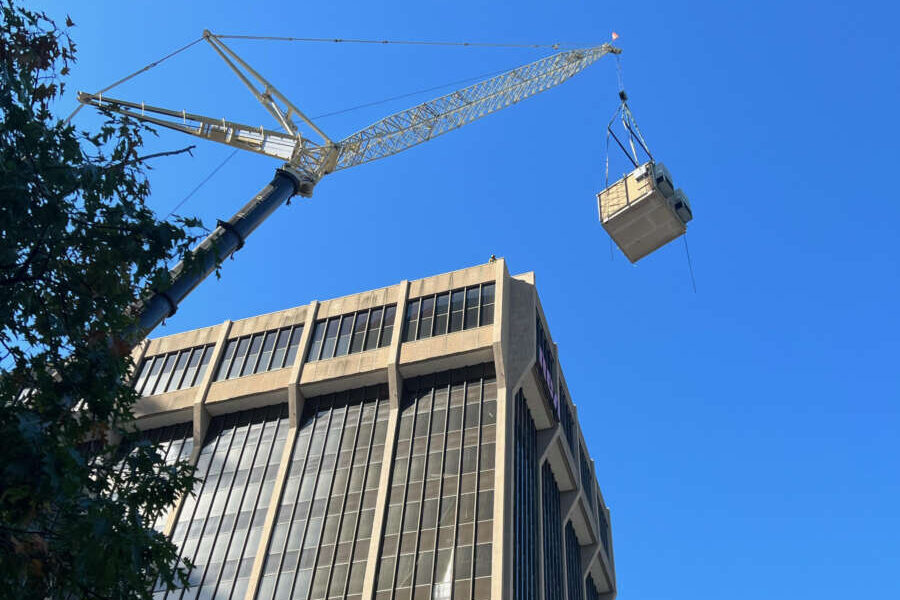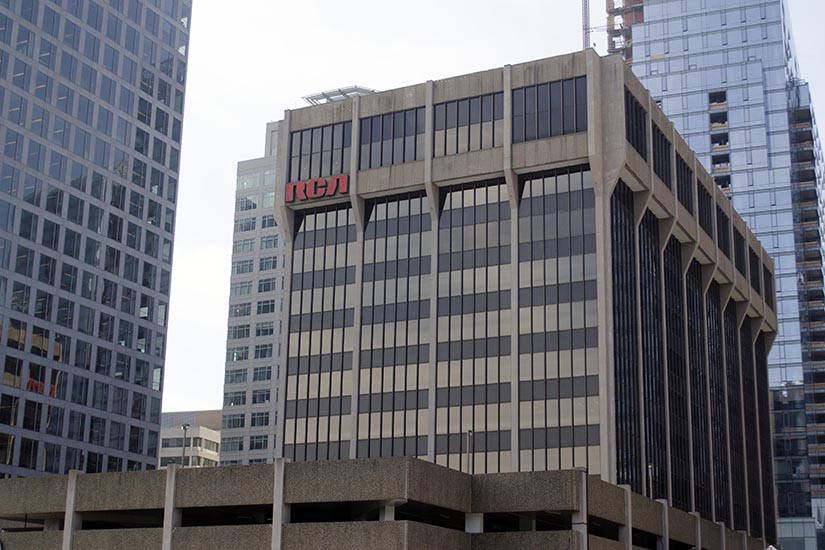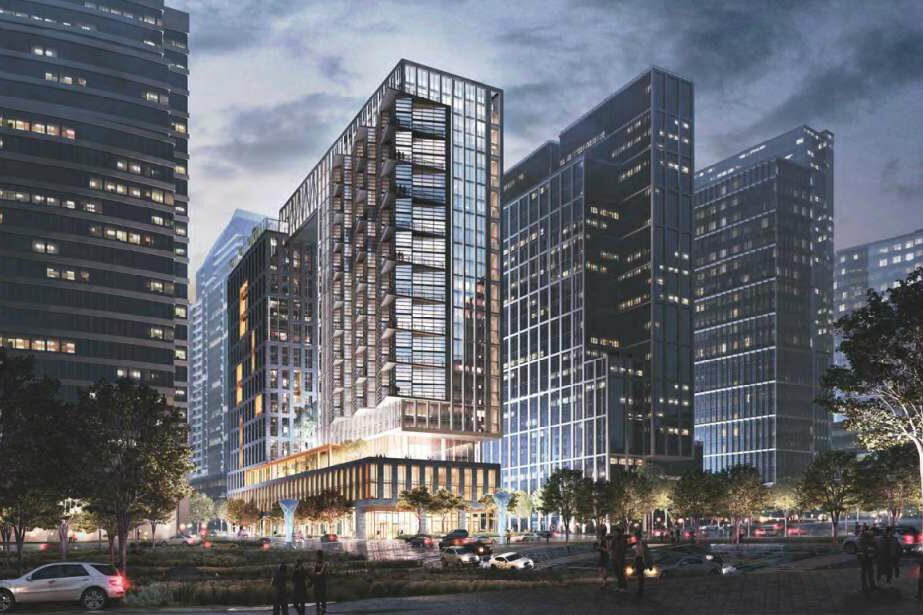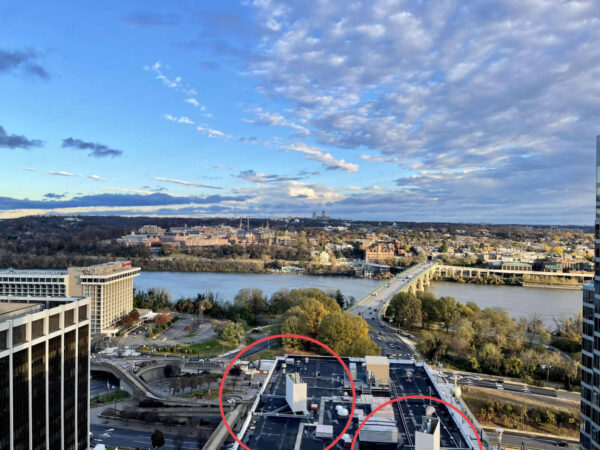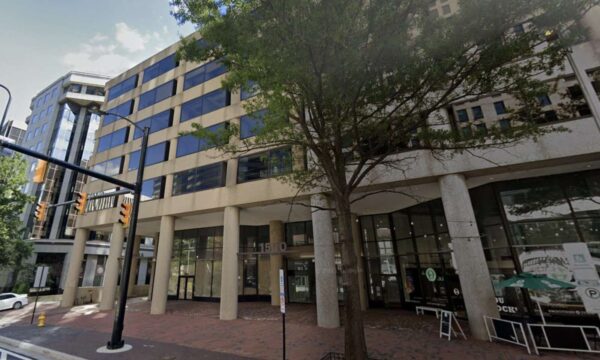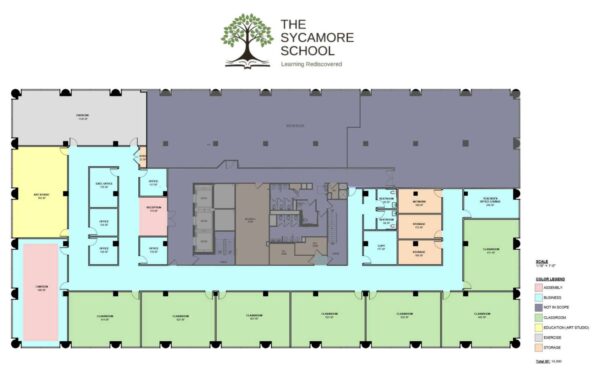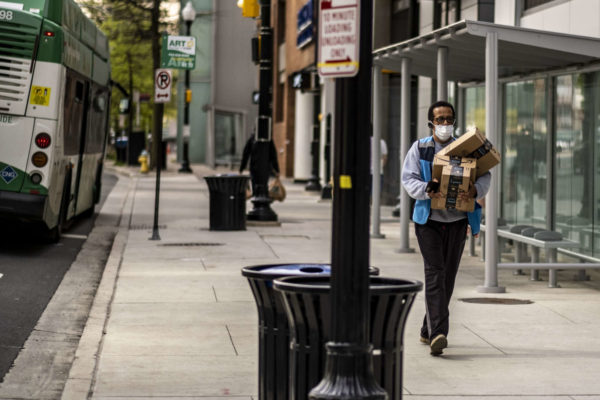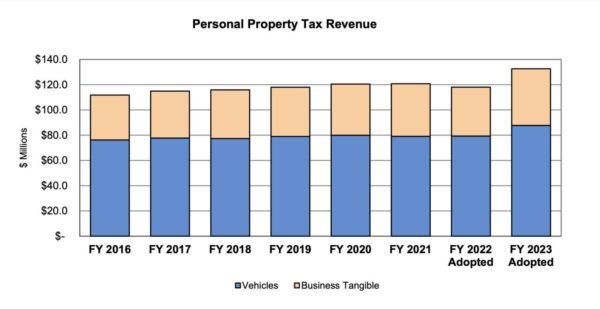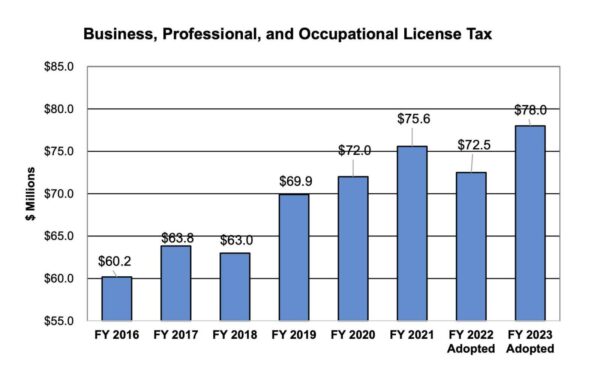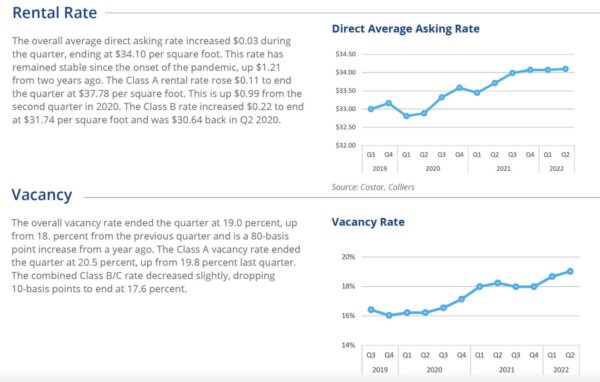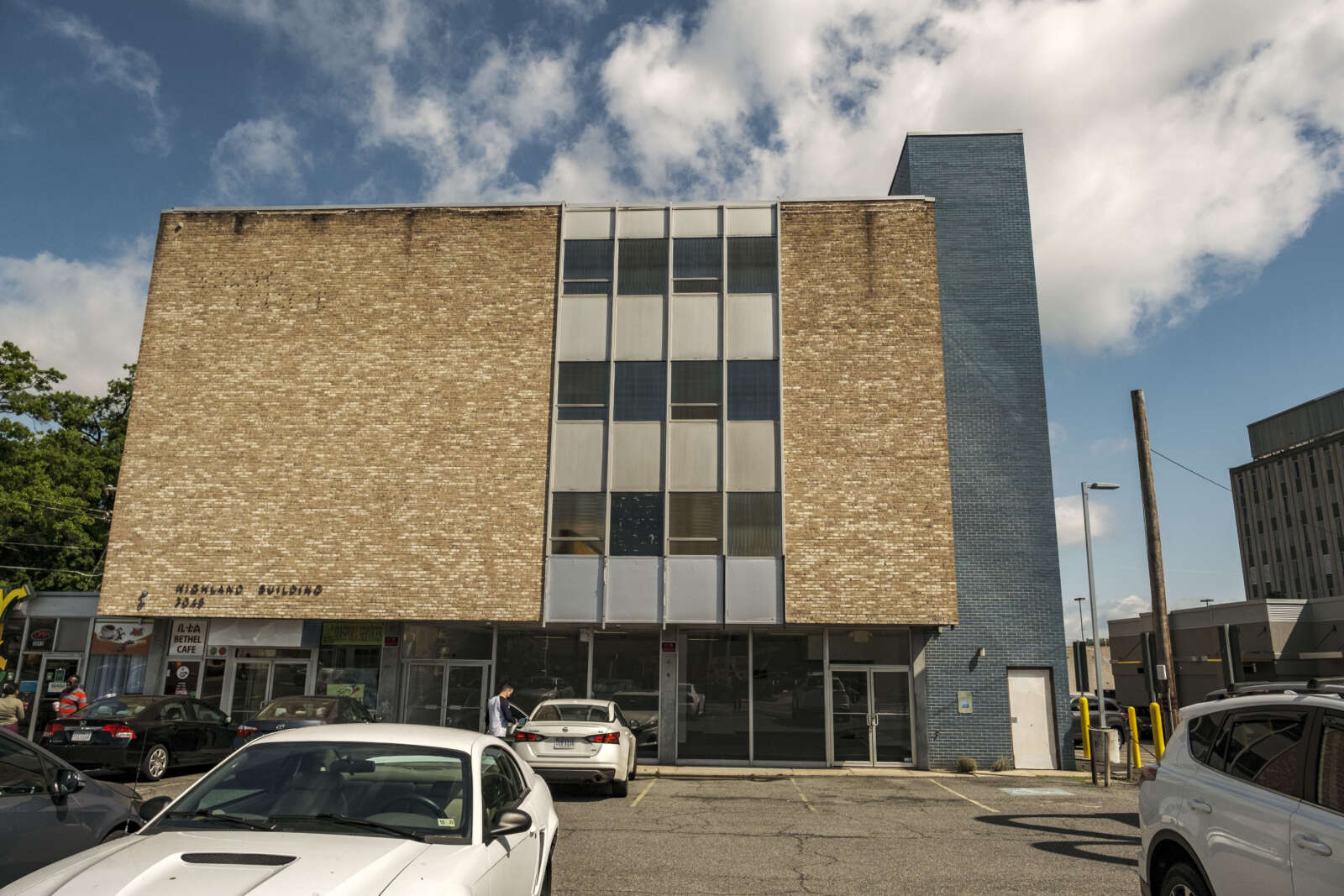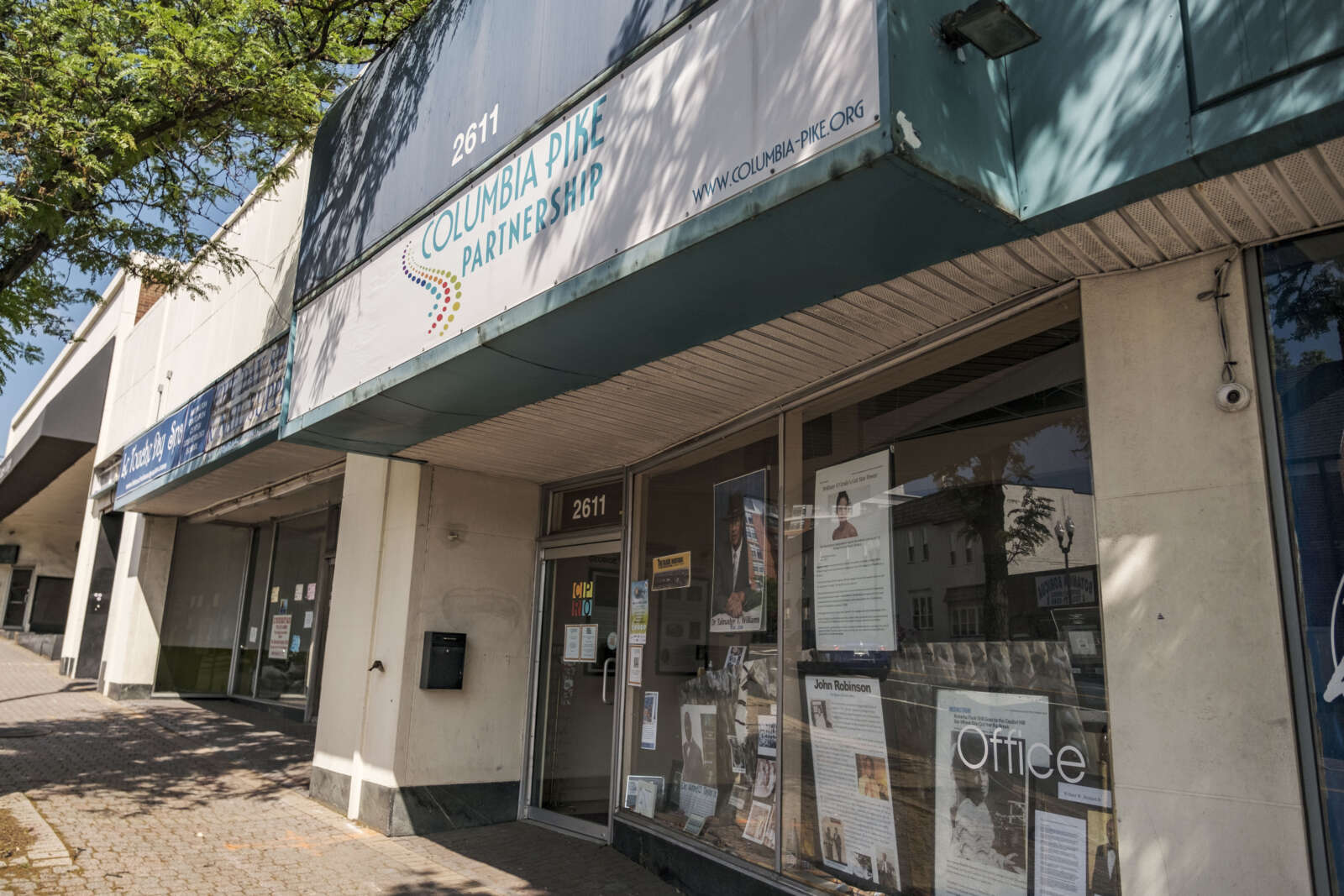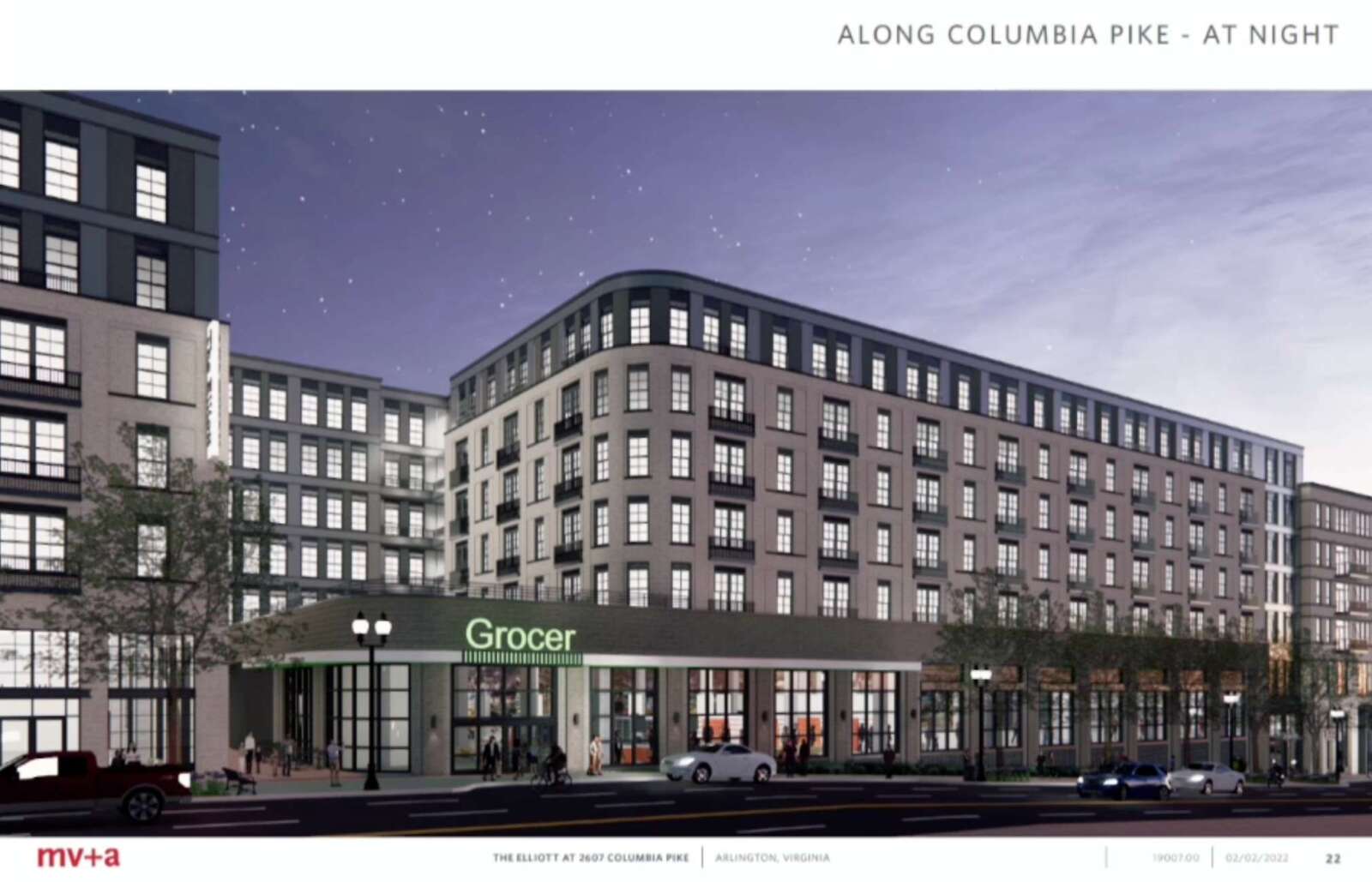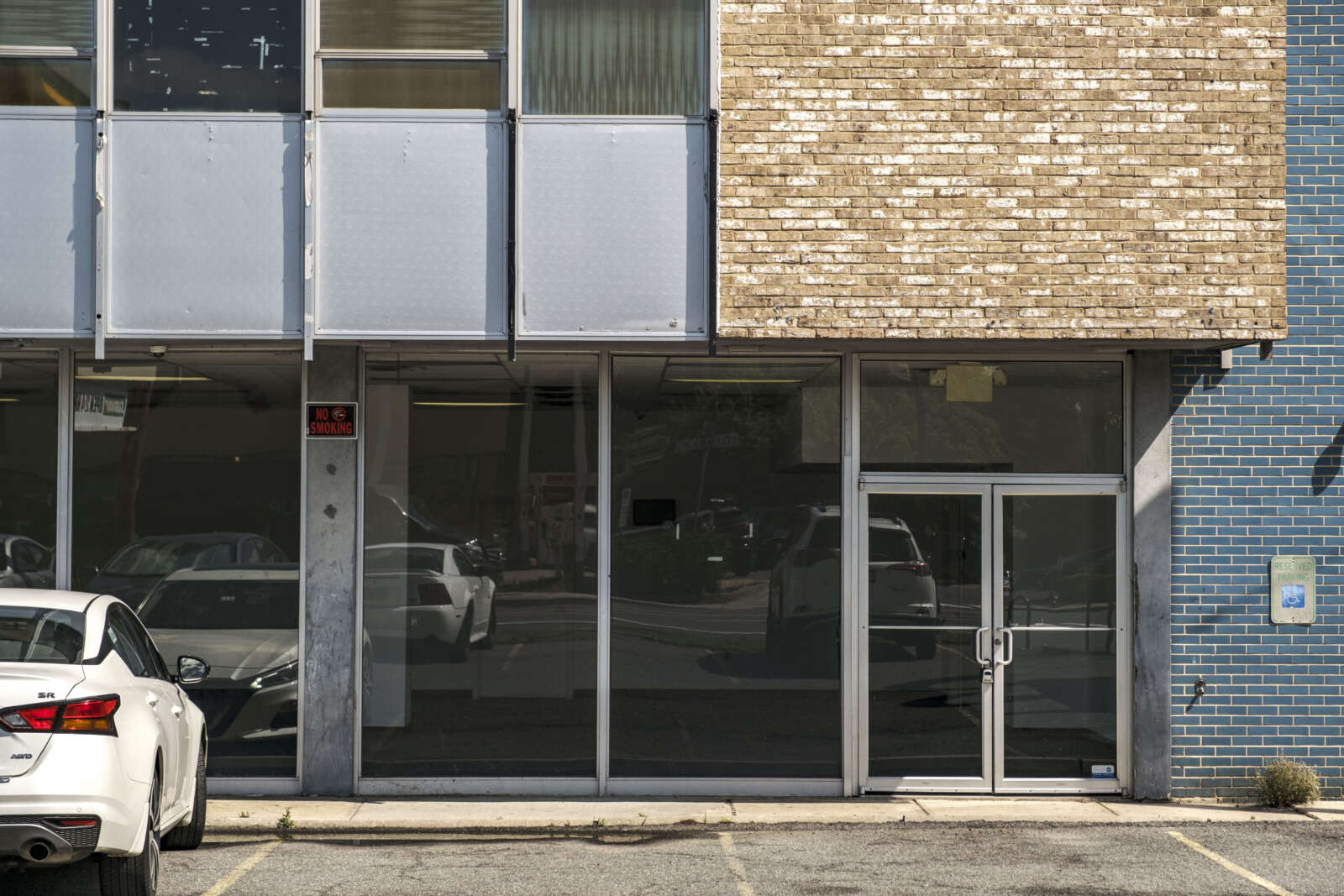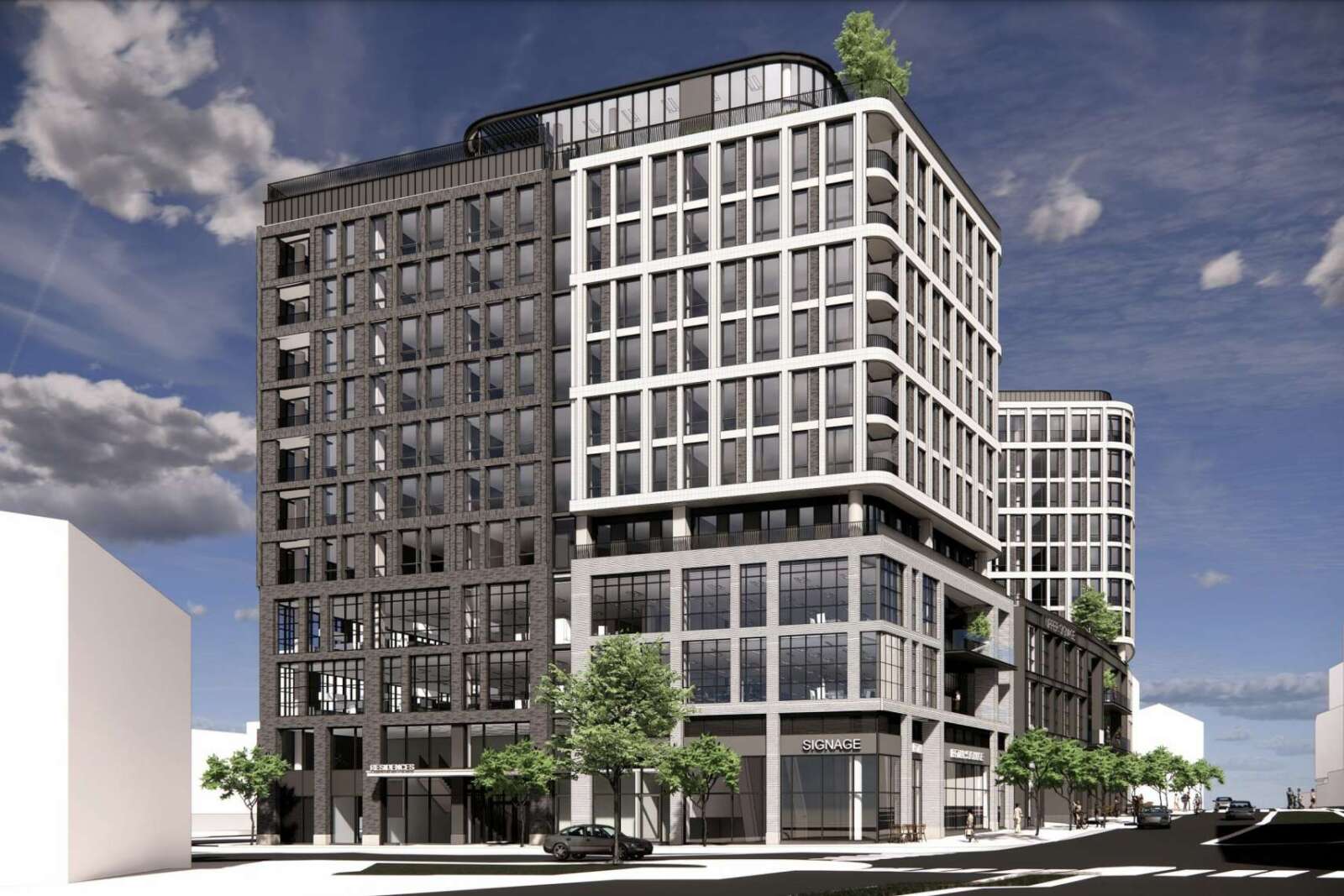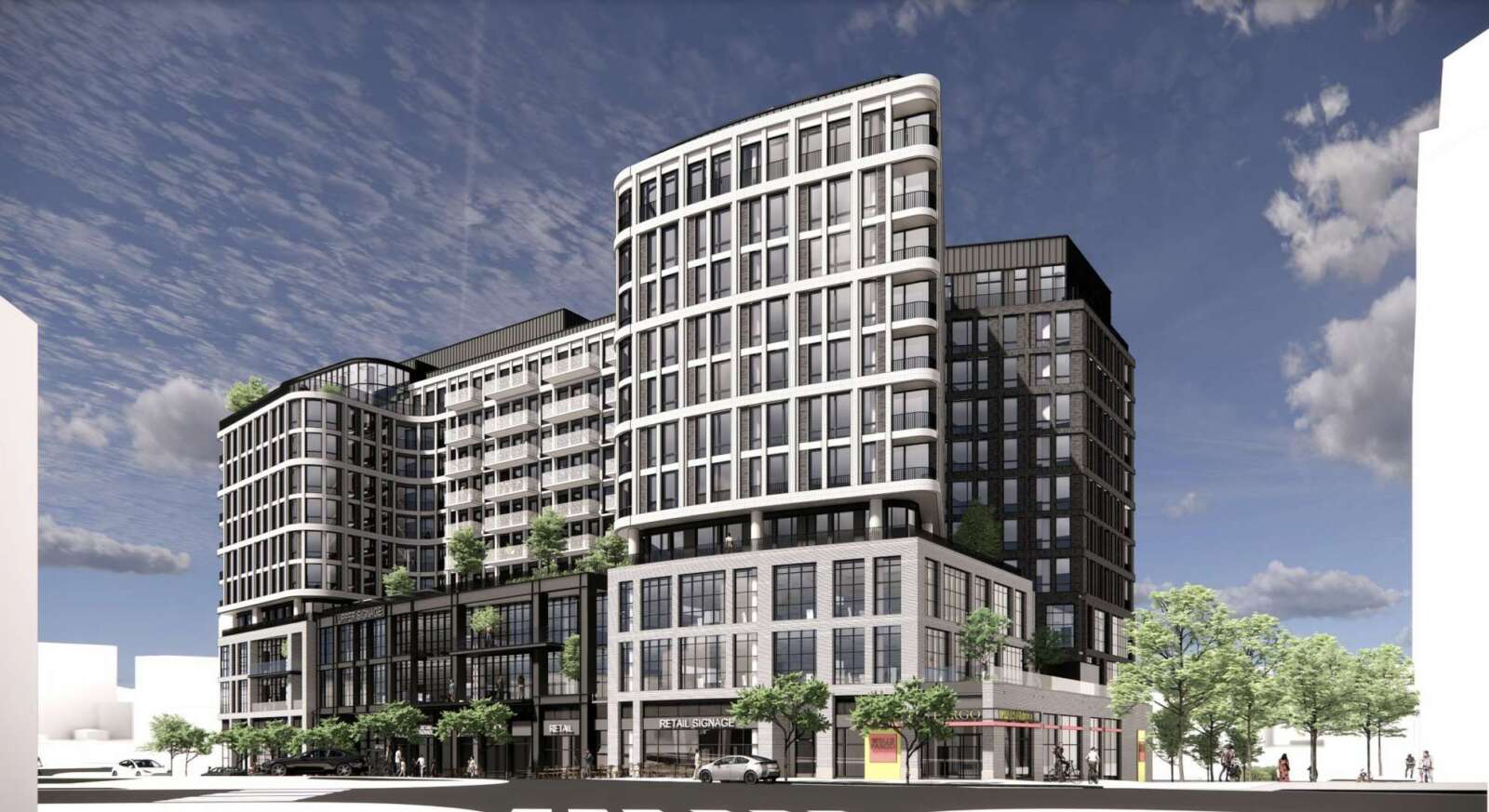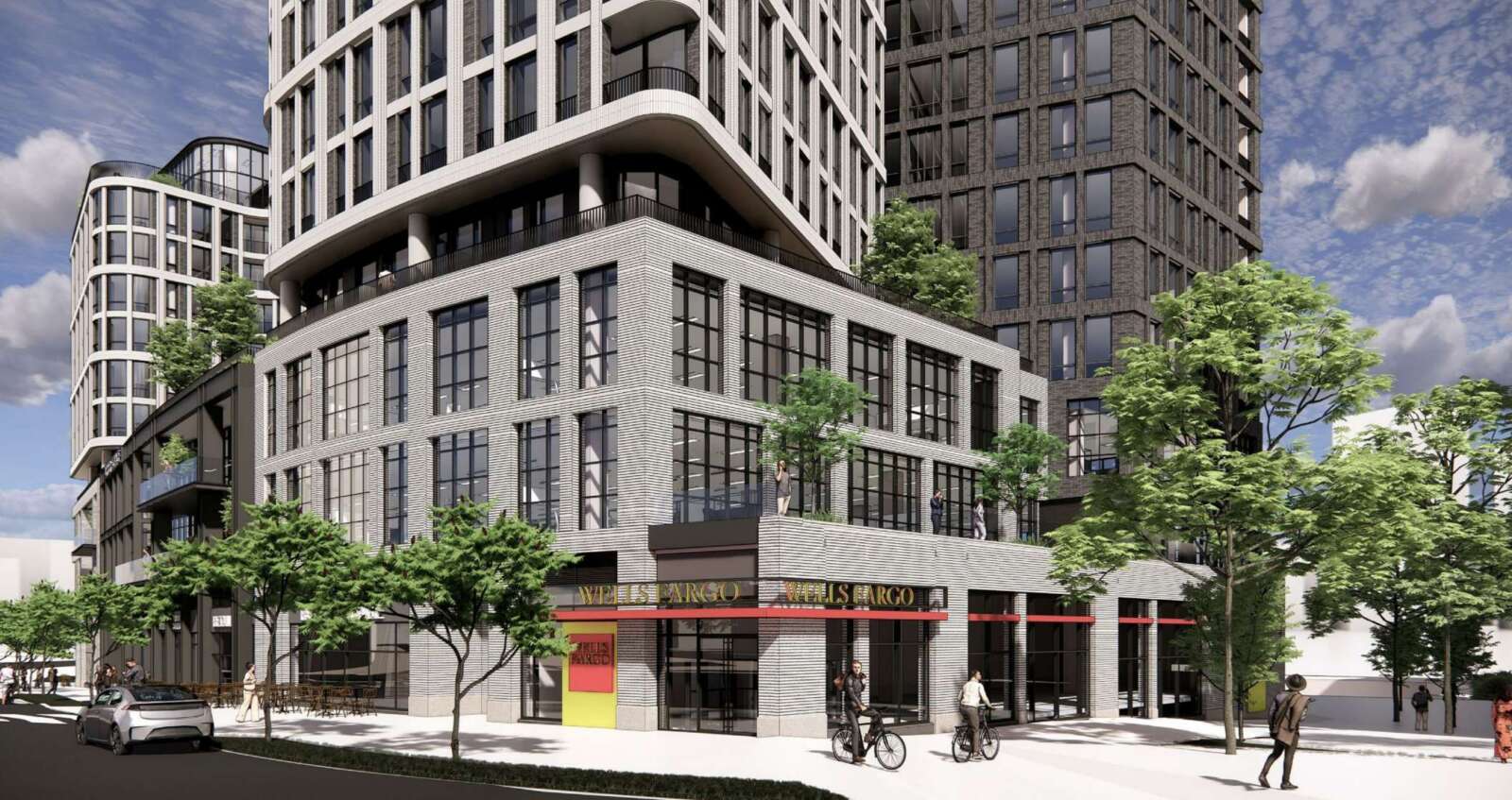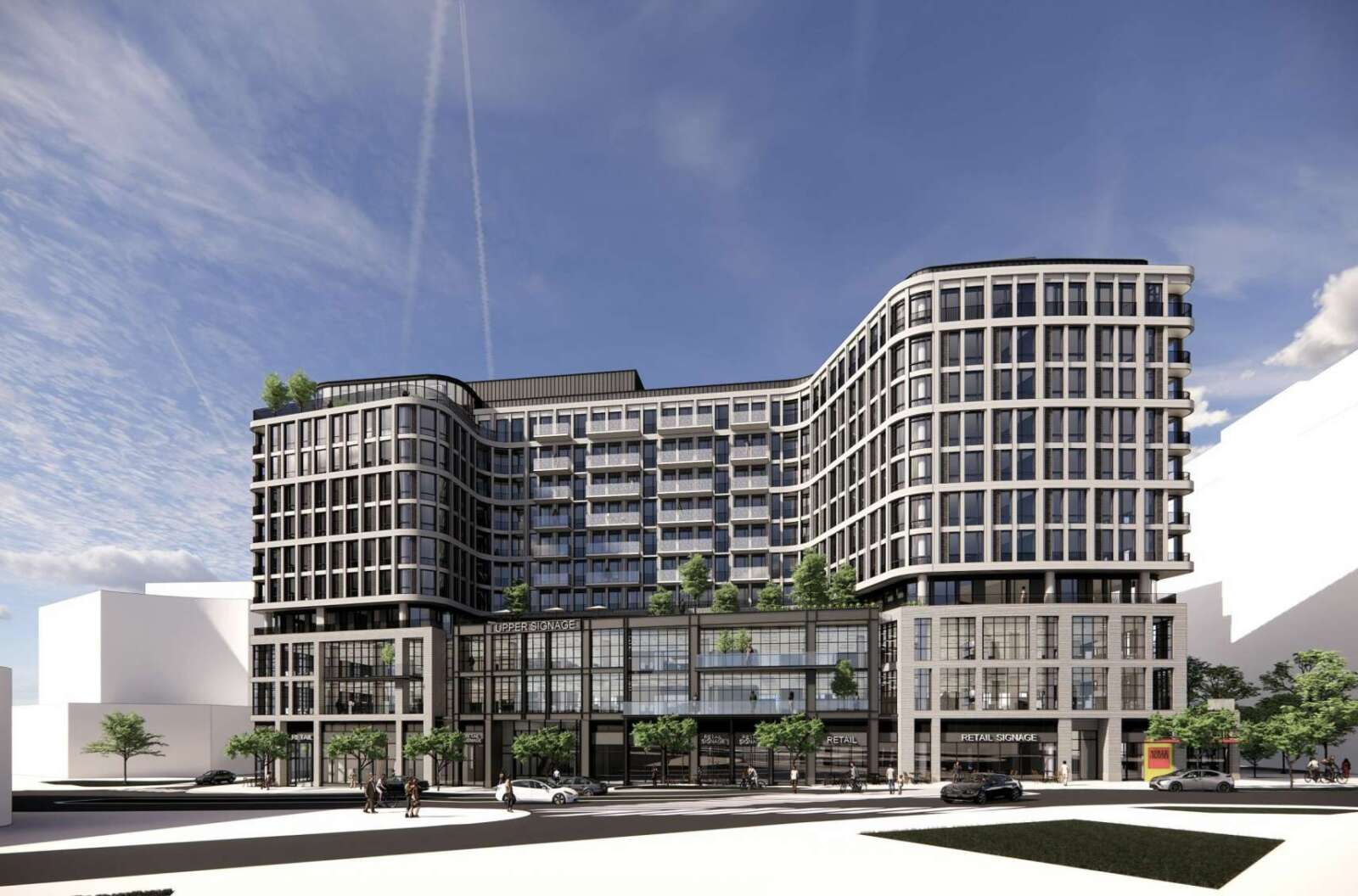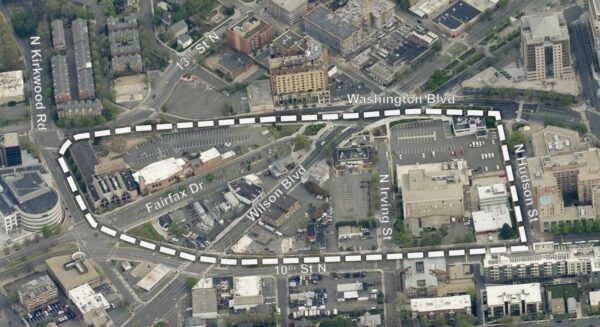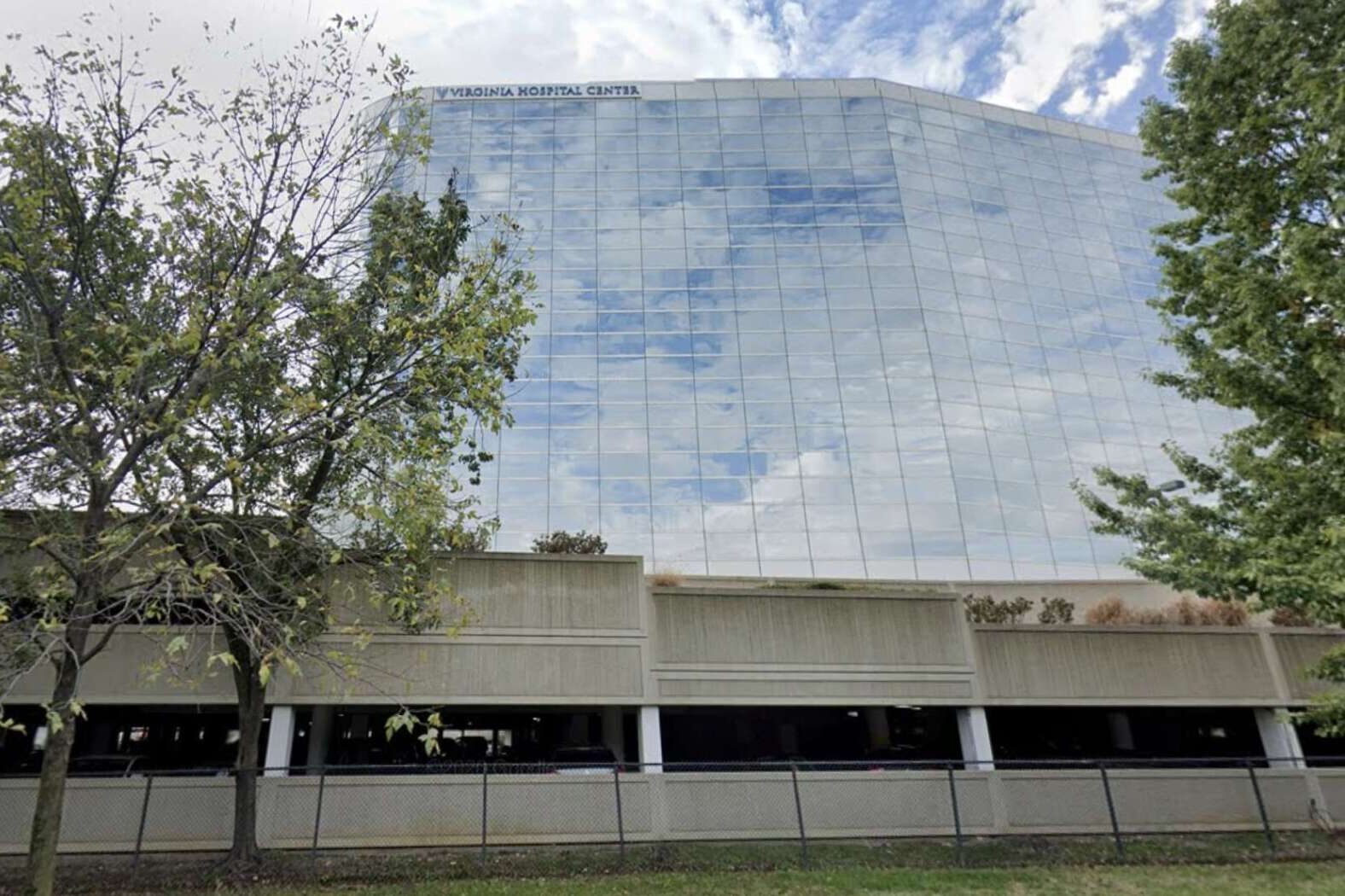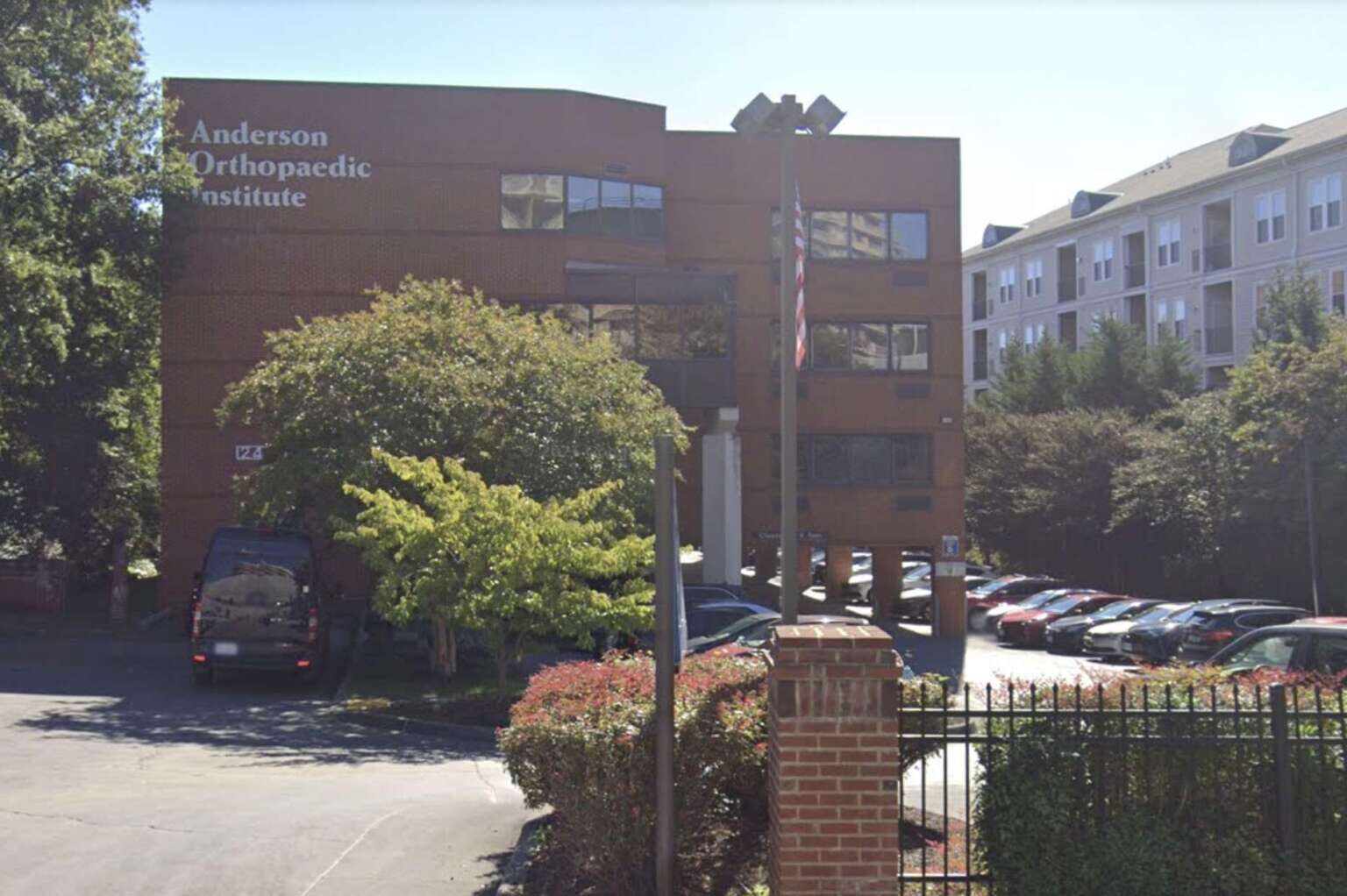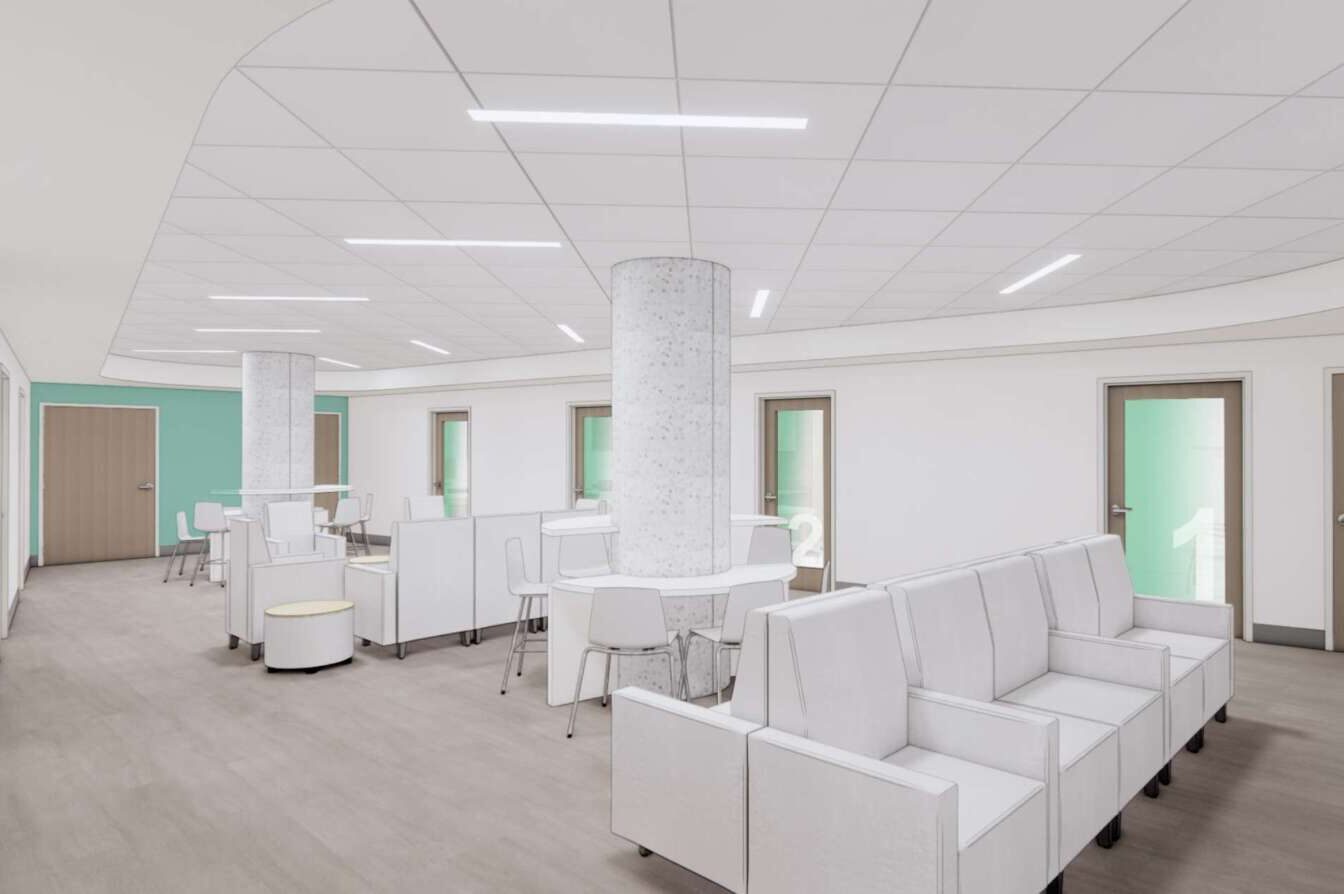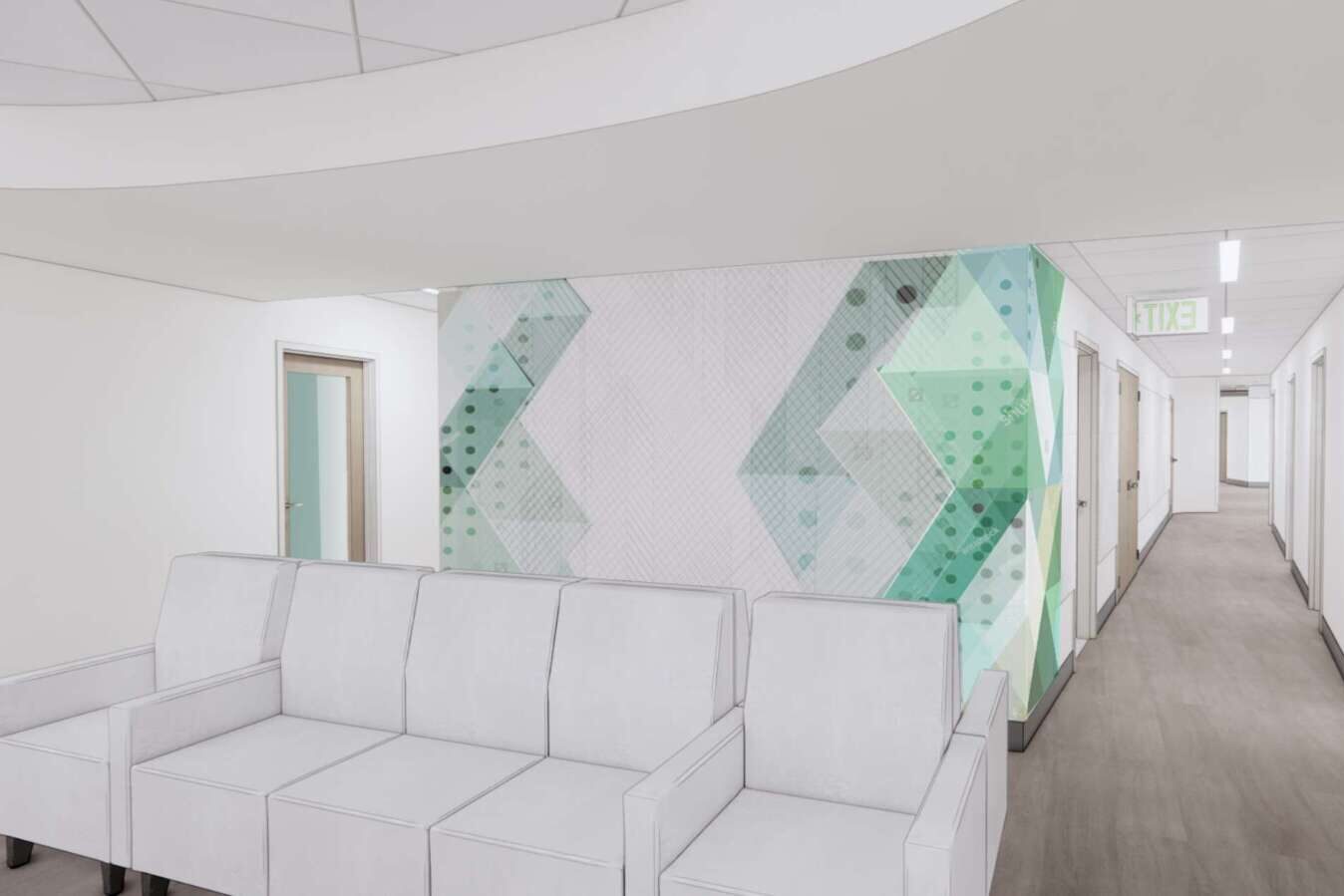A long-dormant plan to redevelop an aging office building and two restaurants between Rosslyn and Courthouse has been revived.
D.C.-based The Fortis Cos. has filed a conceptual site plan application to build a seven-story, 85-foot-tall apartment building at the intersection of Wilson Blvd and N. Rhodes Street.
It would replace an office building at 1840 Wilson Blvd belonging to a nonprofit organization, the National Science Teachers Association, as well as Il Radicchio (1801 Clarendon Blvd) and Rhodeside Grill (1836 Wilson Blvd).
In November of 2005, the Arlington County Board originally approved a site plan that would have retained the NSTA building, demolished the restaurants and replaced them with a new, six-story office building with nearly 62,000 square feet of office space and 10,000 square feet of ground-floor retail and restaurant space.
Three years later, the County Board granted an extension on the project until 2011. A state statute in the wake of the 2007-2009 Great Recession automatically extended the validity of the site plan amendment until July 1, 2020. The County Board has since granted another extension until July 1, 2023.
Fortis intends to file a site plan amendment in the first quarter of 2023 seeking another extension of the site plan until 2026, according to the application.
“It is anticipated that the property’s nonprofit owner NSTA will remain as a tenant on the property until the redevelopment occurs,” the application says.
Meantime, the applicant is seeking feedback from the county on a number of aspects of the plan, including the building’s proposed height.
Land use attorneys who filed the application say the proposed seven-story building complies with the maximum 16-story height limit for apartments developed in this zoning district, but it is taller than recommended in the Rosslyn-to-Courthouse Urban Design Study.
“While the Study recommends 5 stories/55 feet at this location, the proposed height will provide a visually appropriate bookened for this block in a manner that is in character with the surrounding development and helps meet the county’s development goals,” the application says.
The study allows for height flexibility in exchange for affordable housing commitments, community facilities, special design considerations and new streets, it continues.
This is the latest proposal to switch from a proposed office building to an apartment building, as office vacancies deepen and developers continue pursuing housing developments.
And this is not the only long-dormant project Fortis has reprised this year. The Washington Business Journal reported in September that the company is taking on a stagnating apartment project at 2025 Fairfax Drive, a half-acre parcel in the Radnor-Fort Myer Heights neighborhood.
Fortis has seen to completion other apartment buildings in Clarendon, Rosslyn and Pentagon City, as well as the Residence Inn in Courthouse.


